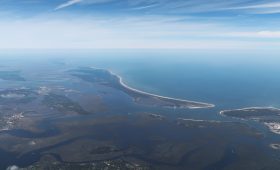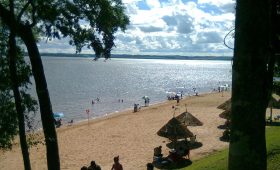Exploring Curieuse Island
Curieuse Island, part of the Seychelles archipelago, offers a unique blend of history and natural beauty. Originally named “Ile Rouge” for its red soil, the island was claimed by the French in 1768 and later used as a leper colony until 1965. Today, it stands as a testament to conservation efforts, with its diverse wildlife and lush landscapes.
Getting There
Reaching Curieuse Island requires a bit of planning. Start by flying into Seychelles International Airport. From there, catch a domestic flight to Praslin Island, the closest island to Curieuse. A short boat ride from Praslin will take you to Curieuse, offering stunning views of the Indian Ocean along the way.
Best Time to Visit
The ideal time to visit Curieuse Island is between April and June or September and November. During these months, the weather is pleasant, with temperatures ranging from 77°F to 86°F (25°C to 30°C). These periods also see less rainfall, perfect for outdoor activities like hiking and snorkeling. Always check the local weather forecast before your trip, as the Seychelles has a tropical climate.
Highlights of Curieuse Island
Giant Tortoises
Curieuse is home to over 300 Aldabra giant tortoises, relocated here between 1978 and 1982. These majestic creatures roam freely, particularly around the Ranger’s Station. Observing and feeding these ancient animals is a highlight for many visitors.
Beaches and Trails
The island’s beaches, such as Anse St. Joseph, offer tranquility and natural beauty. While Anse Georgette is not on Curieuse, Anse St. Joseph provides a serene spot to relax. The island’s trails are well-marked, making it easy to explore on foot. A walkway through the mangrove swamp offers a unique perspective on the island’s ecosystem.
Coco de Mer Trees
Curieuse is renowned for its Coco de Mer palms, which produce the largest seeds in the plant kingdom. The island’s conservation efforts have helped protect these unique trees, offering visitors a chance to see them up close. Walking through the Coco de Mer forest feels like stepping into a prehistoric world.
Marine Life
The waters around Curieuse are part of the Curieuse Marine National Park, established in 1979. Snorkeling and diving here reveal vibrant coral reefs and diverse marine life, including colorful fish, sea turtles, and occasionally dolphins. Bring your snorkeling gear to fully enjoy this underwater paradise.
Local Transportation
Curieuse Island is small enough to explore on foot, with well-marked trails leading to its main attractions. For those who prefer a quicker pace, bicycles are available for rent. The island’s relaxed atmosphere makes it a joy to explore at your own pace.
Additional Insights
Curieuse Island’s history as a leper colony has left behind ruins and the former physician’s residence, now an educational center and museum. Conservation efforts have restored much of the island’s vegetation, including the reintroduction of native plant species. Visitors can also learn about ongoing conservation projects, such as those conducted by Global Vision International, which focus on the island’s flora and fauna.




